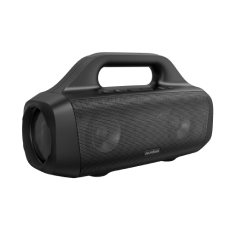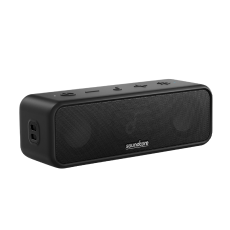A Complete Guide on How to Test Speakers
If you're a music lover, you know how important it is to have great speakers. But how do you know if your speakers are really as good as they could be? And what should you do if your speaker can’t produce sound? Luckily, there are some ways to test them and make sure they're giving you the best sound quality possible. So if your speaker has stopped producing sounds, this article will help you out with how to test speakers by using multiple ways.
Before testing the sounds, you should know how a speaker works. By doing this, you will get a better understanding of how to troubleshoot problems with a speaker
Parts of a Speaker
All these given components together form a speaker:
- Pole + Rear Plate
- Magnet
- Top Plate
- Voice Coil
- Basket
- Spider
- Cone + Surround
- Dust Cap
How Do Speakers Work?
Speakers use an electromagnet to convert the electrical signal from your amplifier into mechanical energy that moves the speaker cone, producing sound.
The process begins when your amplifier sends an electrical signal to the speaker’s voice coil. The voice coil is a coil of wire that is wrapped around the magnet. Voice coils produce magnetic fields when current flows through them, which interact with the permanent magnet in speakers to cause the voice coil to move along with the cone attached. The movement of the cone creates pressure waves in the air, which your ears interpret as sound.
Tools Required for Testing Speakers
Without tools, it's not possible to determine the cause of the problem in any speaker. Here are some tools that you need to diagnose the issues in a speaker:
- AA, AAA, or a 9V Battery
- Multimeter
- Multimeter Probes
- Two pieces of wires
AA is a heavy-duty standard-sized cell used in high-power devices like radios and big toys. On the other hand, AAA is a small-sized cell used in low-power devices like TV remotes and clocks.
How to Test Speaker Wires and Connections?
Sometimes, a speaker's components are perfectly fine, however, the only problem is the wires. To test the continuity of wires, follow the steps given below:
- Step 1: Put the multimeter in Resistance(Ω) mode.
- Step 2: Connect each end of both wires to the positive and negative leads of the multimeter respectively.
- Step 3: If the multimeter shows any value more than 0 on the screen, the wires are good to go. However, if the value is 0, you need to change the wires.
How to Test Speakers for Sound?
In this section, you will learn the different ways to test the workings of speaker components.
Testing Speaker with a Battery
To test the speaker with a battery, you need a 9V battery. After that, follow the steps listed below:
- Step 1: Connect the wires to the positive and negative ends of the battery.
- Step 2: Now, attach the other ends of the wires to the speaker's positive and negative leads.
- Step 3: If you notice any pulse in the speaker, that means your speaker is perfectly fine.
This technique can also be used to inspect whether the tweeters are appropriately working or not.
Note: Do not keep the wires connected longer than 2 seconds, it can cause damage to the speaker.
Testing Speaker with a Multimeter
Grab a digital multimeter and go to the following steps to get started.
- Step 1: Connect both ends of the speaker to the multimeter's positive and negative leads.
- Step 2: If the multimeter produces a continuous tone, then there's a problem with the speaker's circuit. And the multimeter might indicate "0.L" on the digital display.
Testing the Capacitor
If everything is perfect but still, there's a problem that persists in the working of any speaker, you need to check if the capacitor is working or not. To test this, you need a digital multimeter that supports the capacitance measuring option.
- Step 1: Connect the positive lead of the multimeter with the capacitor and vice-versa for the negative.
- Step 2: Check if the readings of the capacitor are exactly as given on the capacitor casing. If the readings are -5 than the given, it's considered a bad capacitor.
How to Test Speakers Manually?
Sometimes, you want to avoid using any tools and analyze the issues by yourself. With manual diagnosing, it's not possible to get precise results, however, you will be certain about the ongoing issues with your speaker.
Your speaker is probably having bigger issues if it is...
- Producing unpleasant and fuzzy
- Releasing smoke or a burning smell coming from inside.
- Damaged or torn with the speaker cone.
- Wrong with wire connections or defective wires.
- Losing rhythm while the music is playing.
Some things like a wrecked speaker cone or flawed cables can be fixed. But issues like the speaker not working at all can't be fixed unless you test them with external tools like a battery or a multimeter.
FAQs about How to Test Speakers
How do I know if my speakers have good sound?
There are a few ways to tell if your speakers have good sound.
- First, try playing a variety of music and see how well the speakers handle different genres.
- Second, pay attention to the soundstage, or the width and depth of the sound. Good speakers will create a wide soundstage that gives the illusion of being in the same room as the performers.
- Finally, listen for any distortion in the sound. Even the best speakers will produce some distortion at high volumes, but it should be minimal. If you can't hear any distortions, then your speakers are probably producing good sound.
How do you test a wired speaker?
A wired speaker can be tested either with a battery or a multimeter. In both cases, you have to connect the positive and negative leads of the multimeter's probe with the speaker's ends. However, out of both methods, a multimeter is an easy way to test the speaker.
How can you tell positive and negative speaker wire?
Usually, it can be determined via the color of the wires. The red color indicates the positive and the black one indicates the negative. However, in some cases, both wires have the same colors. Here you can notice if the terminal is big, it's positive, if small, it's negative.
Conclusion
Sound systems are a common and necessary part of many household and businesses. However, when they stop working properly, it can be a major inconvenience. That's why it's important to have some basic knowledge about speaker.
Sound quality is an important part of any audio experience. But when sound quality is poor, it can negatively impact the listener in a number of ways. That's why it's important to choose a sound system that will deliver clear, high-quality sound. soundcore speakers are designed to provide the best possible sound quality, so you can enjoy your music without worry.















































